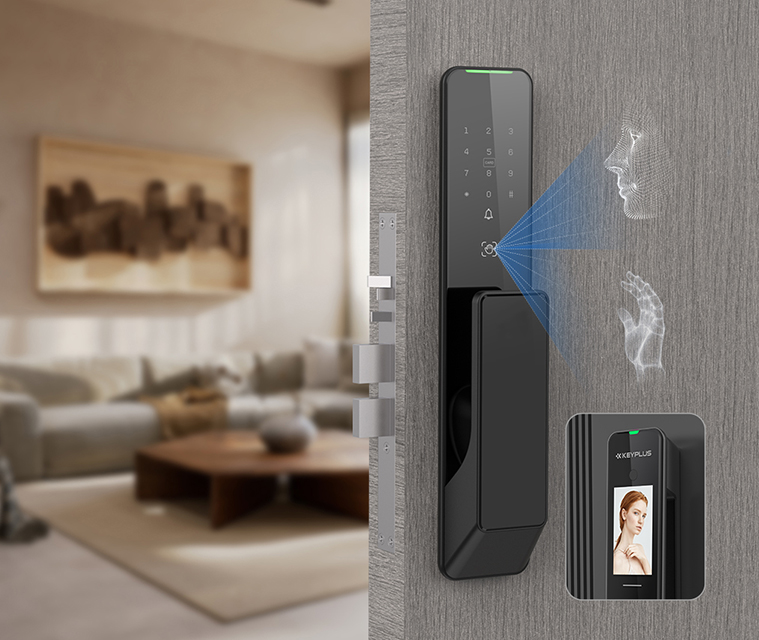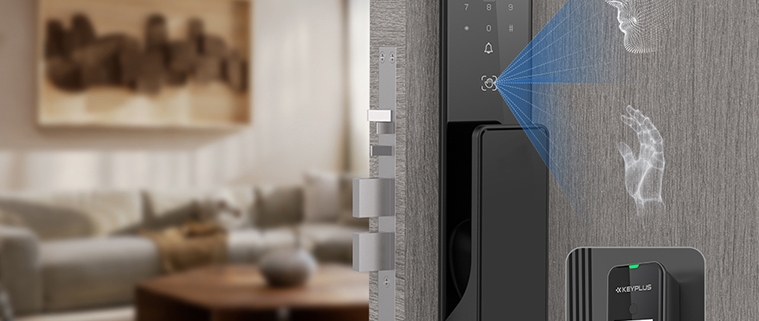Smart Door Lock vs Traditional: Which is Better for Your Home?
Home security remains a top priority for American homeowners, and the front door serves as the first line of defense against intruders. In recent years, smart door locks have emerged as a modern alternative to traditional mechanical locks, creating a dilemma for many households: should they stick with the familiar tumbler lock or upgrade to a digital solution? This comprehensive comparison examines both options across multiple dimensions—security, convenience, cost, reliability, and integration—to help you determine which type of lock better suits your lifestyle and security needs.
Understanding the Basics: How They Work
Traditional Door Locks: Time-Tested Mechanics
Traditional locks operate on mechanical principles that haven’t changed substantially in over a century. The most common types found in American homes include:
- Deadbolts: Single-cylinder (key outside, thumbturn inside) or double-cylinder (key both sides)
- Knob locks: Combined with deadbolts for added security
- Lever handle locks: Common in commercial settings and ADA-compliant homes
These locks use pin tumblers that require precise alignment via a specifically cut key. When inserted, the key’s ridges raise the pins to the correct height, allowing the cylinder to turn and retract the bolt. High-security traditional locks may include features like drill-resistant plates, bump-proof cylinders, or pick-resistant mechanisms.
Smart Door Locks: Digital Age Security
Smart locks replace or augment mechanical components with electronic ones, offering multiple access methods:
- Keypad entry: Users enter a personalized numeric code
- Bluetooth/Wi-Fi connectivity: Smartphone apps control locking/unlocking
- Biometric scanners: Fingerprint recognition for personalized access
- Voice control: Integration with Alexa, Google Assistant or Siri
- Remote access: Lock/unlock from anywhere via internet connection
- Auto-locking: Programmable timers that engage the lock automatically
Most smart locks still include either a traditional keyway or an emergency mechanical override (like the Schlage Encode’s hidden keyhole) as backup. Advanced models incorporate encryption protocols (like AES 128-bit) and two-factor authentication to prevent digital hacking.
Security Showdown: Which Lock Protects Better?
Physical Security Comparison
Both lock types share similar physical components—deadbolt throw length (typically 1″), strike plates, and reinforced door jamb requirements. Where they differ:
Traditional Lock Advantages:
- No digital vulnerabilities to hacking or wireless interception
- Proven resistance to physical attacks when using high-security cylinders (like Medeco or Mul-T-Lock)
- No power dependence means consistent operation during outages
Smart Lock Security Features:
- Real-time intrusion alerts sent to your phone
- Activity logs showing who entered and when
- Temporary virtual keys for guests that expire automatically
- Geofencing that locks doors when you leave the neighborhood
The American National Standards Institute (ANSI) rates both mechanical and electronic locks using Grade 1 (highest), 2, or 3 classifications based on durability and resistance to forced entry. Many premium smart locks like the Yale Assure achieve Grade 1 certification—equal to high-end traditional deadbolts.
Digital Security Considerations
Smart locks introduce new potential vulnerabilities that traditional locks don’t face:
- Bluetooth hacking: Early models were vulnerable to “blue snarfing” attacks
- Wi-Fi risks: Poorly secured home networks could allow remote hacking
- App vulnerabilities: Some brands had history of weak authentication protocols
However, modern smart locks address these with:
- Military-grade encryption standards
- Regular firmware updates to patch vulnerabilities
- Local (non-cloud) operation options like the Level Lock+
The FBI’s Internet Crime Complaint Center recommends using smart locks with:
- Two-factor authentication
- Unique passwords (not default credentials)
- Separate IoT network segmentation
Convenience Factors: Daily Use Compared
Traditional Lock Convenience
Pros:
- Universally understood operation—no tech learning curve
- Always operational regardless of power or internet status
- No batteries to replace (except for some electronic keypad models)
- Works during natural disasters when digital systems may fail
Cons:
- Key loss requires rekeying or lock replacement
- No remote access capability
- Hard to manage guest access (physical key copying needed)
- No activity monitoring
Smart Lock Convenience Features
Pros:
- Keyless entry—no more fumbling for keys with arms full of groceries
- Remote locking—verify your door is secure from bed or while traveling
- Temporary access codes for contractors, dog walkers, or Airbnb guests
- Integration with other smart home devices (lights, alarms, cameras)
- Voice control through home assistants
Cons:
- Power dependency (most use 4 AA batteries lasting 6-12 months)
- Potential connectivity issues with home networks
- Some models have slight delays in operation versus instant mechanical response
A 2023 survey by SafeWise found that 68% of smart lock users listed “never being locked out” as their primary benefit, while 54% appreciated being able to check door status remotely while away.

Cost Analysis: Upfront and Long-Term Expenses
Traditional Lock Costs
- Basic deadbolt: 25-80 (Kwikset, Schlage)
- High-security deadbolt: 100-300 (Medeco, Abloy)
- Installation: Typically 75-150 per lock if not DIY
- Maintenance: Occasional lubrication; rekeying costs 10-25 per lock
- Key replacement: 2-5 per copy at hardware stores
Smart Lock Costs
- Entry-level models: 100-150 (Wyze Lock, August Wi-Fi)
- Mid-range: 200-300 (Schlage Encode, Yale Assure)
- Premium systems: 300-500 (Level Lock+, Kwikset Halo)
- Installation: Similar to traditional if replacing existing hardware
- Maintenance: Battery replacement ($10/year); potential cloud service fees
- Additional costs: Possible need for Wi-Fi extenders or smart home hubs
While smart locks cost 3-5 times more upfront, they may provide insurance discounts (5-15% according to Policygenius) and eliminate rekeying expenses when moving or losing keys.
Reliability and Durability
Mechanical Reliability
Traditional locks generally last longer before failure:
- Average lifespan: 7-10 years for basic models; 20+ years for high-end
- Fewer components that can malfunction
- Weather resistance—no electronics to degrade in extreme temperatures
Common failure points:
- Worn keys damaging tumblers over time
- Frozen locks in northern climates (solvable with antifreeze lubricant)
- Latch alignment issues from door frame settling
Electronic Reliability
Smart lock lifespans average 3-5 years before technology becomes outdated or components fail. Potential issues:
- Motorized actuators wearing out from frequent use
- Touchscreen keypads failing in extreme cold (below -22°F)
- Battery corrosion if low-quality batteries leak
- Software obsolescence when manufacturers discontinue support
However, brands like August and Yale offer 2-3 year warranties, and modular designs allow replacing just the electronic components in some models.
Installation and Compatibility
Traditional Lock Installation
- Standardized measurements (2-3/8″ or 2-3/4″ backset)
- Fits most residential doors without modification
- Basic tools required: screwdriver, tape measure, drill
- DIY-friendly with numerous online tutorials
Smart Lock Installation Considerations
Three installation types exist:
- Full replacement: Entire lock mechanism is new (easiest for new construction)
- Retrofit designs: Keep existing deadbolt, replace exterior hardware (August Wi-Fi)
- Interior add-ons: Devices like the August Smart Lock attach over interior thumbturns
Compatibility issues to check:
- Door thickness requirements (usually 1-3/8″ to 2-1/4″)
- Existing deadbolt brand compatibility (some only work with Kwikset/Schlage)
- Smart home ecosystem (Z-Wave vs Zigbee vs Wi-Fi)
Special Considerations for American Homes
Climate Factors
- Hot humid states (FL, TX): Salt air corrosion affects both types; smart lock screens may suffer glare
- Cold northern states (MN, ND): Lithium batteries perform better than alkaline in freezing temps
- Earthquake zones (CA): Smart locks can alert to door frame misalignment after quakes
Regional Security Needs
- Urban areas: Smart lock activity logs help monitor frequent deliveries
- Suburbs: Geofencing conveniently secures homes when leaving neighborhoods
- Rural properties: Traditional locks may be preferable where internet connectivity is unreliable
Rental Property Applications
- Landlords: Smart locks enable remote rekeying between tenants
- Airbnb hosts: Generate unique codes for each guest stay
- Property managers: Audit trails document maintenance worker access
The Verdict: Which Should You Choose?
Best Scenarios for Traditional Locks
Choose traditional if you:
- Prioritize simplicity and proven security
- Live in areas with frequent power outages
- Have limited technical knowledge
- Want minimal maintenance
- Need budget-friendly security
Best Scenarios for Smart Locks
Upgrade to smart if you:
- Frequently forget or lose keys
- Want to monitor home access remotely
- Regularly host service providers or guests
- Already have other smart home devices
- Can invest in higher-end models with robust security
Hybrid Approach
Many Americans opt for combining both:
- Smart lock on main entry door for convenience
- Traditional high-security deadbolt on basement or garage doors
- Mechanical locks as backup on all smart-locked entries
Future Trends in Door Security
Emerging technologies may soon bridge the gap further:
- Biometric advancements: Facial recognition locks (like the Lockly Visage)
- Blockchain keys: NFT-based digital credentials that can’t be duplicated
- Self-powering locks: Kinetic energy harvesters eliminating batteries
- AI monitoring: Behavioral analysis detecting suspicious access patterns
Conclusion
The smart lock vs traditional lock debate ultimately depends on individual household needs. While traditional mechanical locks offer time-tested reliability, smart locks provide unprecedented convenience and control. For most Americans, the ideal solution lies in either selecting a high-quality smart lock with mechanical backup (like the Schlage Encode) or maintaining traditional locks while adding smart features through separate devices (like the August Wi-Fi adapter). Whatever you choose, prioritize ANSI Grade 1 security ratings, professional installation if unsure, and regular maintenance to keep your home’s first line of defense strong.









